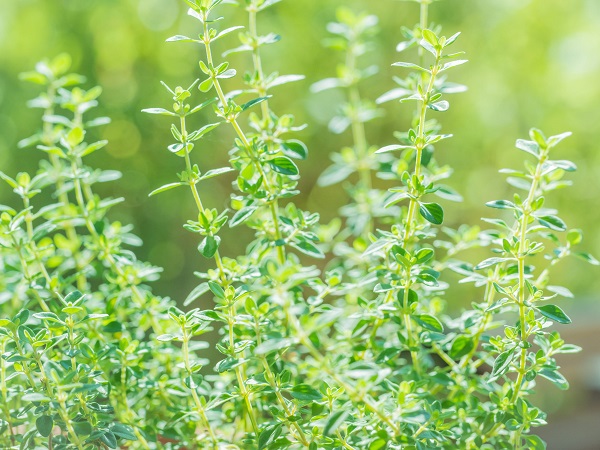
Thyme has a long and rich history, dating back thousands of years. It is believed to have originated in the Mediterranean region, and was used by the ancient Egyptians, Greeks, and Romans for its medicinal properties.
The ancient Egyptians used thyme in their embalming process, and the ancient Greeks believed that it had the power to increase strength and courage. It was also used by the Romans in their cooking and as a medicine.
In the Middle Ages, thyme was widely used in Europe as a culinary herb and for medicinal purposes. It was believed to have antiseptic properties and was often used to treat respiratory ailments such as coughs and colds. Thyme was also used as a natural remedy for digestive issues and to help promote sleep.
During the Renaissance, thyme became a popular herb in European gardens and was used by herbalists to treat a variety of ailments. In the 18th century, thyme was introduced to North America, where it was used both as a culinary herb and as a medicine.
Today, thyme is still widely used in cooking and is a popular ingredient in Mediterranean cuisine. It is also used in the production of perfumes, cosmetics, and natural remedies for respiratory and digestive issues. Overall, thyme has a rich and fascinating history, and its culinary and medicinal uses continue to be appreciated around the world.
Thyme is a hardy herb that can tolerate hot, dry conditions and grows well in containers or the garden. It adds a savory flavor to meat dishes, soups, and stews.
How to Grow Thyme
Choose a Sunny Spot
Thyme likes a sunny spot and needs at least six hours of direct sunlight per day. Choose a spot in your garden or balcony that receives plenty of sun.
Prepare the Soil
Thyme prefers well-draining soil that is on the dry side. You can add sand or gravel to the soil to improve its drainage.
Planting
Thyme can be grown from seeds or cuttings. If planting from seeds, sow them directly in the soil about 1/4 inch deep and cover them with soil. If planting from cuttings, take a stem from an existing thyme plant and remove the lower leaves. Plant the stem in the soil and water well.
Water Sparingly
Thyme prefers dry soil and does not need to be watered frequently. Water the plants deeply, but let the soil dry out slightly between waterings.
Fertilize Sparingly
Thyme does not need a lot of fertilizer. You can add a small amount of compost or a balanced fertilizer to the soil in the spring to encourage healthy growth.
Prune Regularly
To keep the plant compact and encourage new growth, trim the thyme back by about one-third in the spring.
Harvesting
You can start harvesting thyme leaves once the plant has grown to a height of 6-8 inches. Harvest the leaves regularly to encourage new growth.
9 Fun Facts About Thyme
Thyme has been used for its culinary and medicinal properties for thousands of years and was even used by ancient Egyptians in their embalming process.
There are over 300 different species of thyme, but the most common varieties used for cooking are English thyme, French thyme, and lemon thyme.
Thyme is a member of the mint family and has a minty, earthy flavor with hints of lemon.
The essential oil of thyme has antiseptic properties and has been used as a natural remedy for respiratory issues such as coughs and bronchitis.
Thyme is also believed to have antioxidant properties and may help to protect against oxidative stress and cellular damage.
In ancient Greece, thyme was considered a symbol of courage and was often given to soldiers before they went into battle.
Thyme is a popular herb in Mediterranean cuisine, and is commonly used in dishes such as ratatouille, pizza, and grilled vegetables.
Thyme is also used in the production of perfumes and cosmetics and is a common ingredient in soaps and shampoos.
In the Middle Ages, thyme was believed to have magical powers and was often used in spells and potions by witches and sorcerers.
Related Articles & Free Email Newsletter Sign Up
Dried Herbs Require Little Work and Offer a Great Reward




Comment here